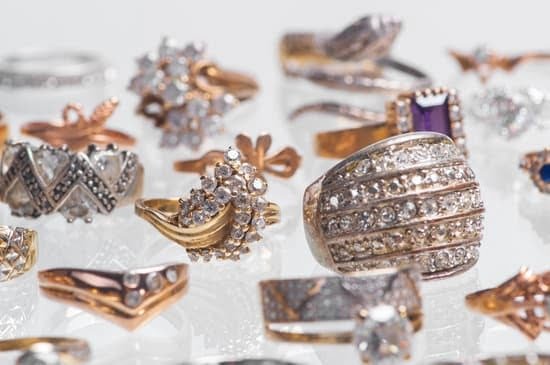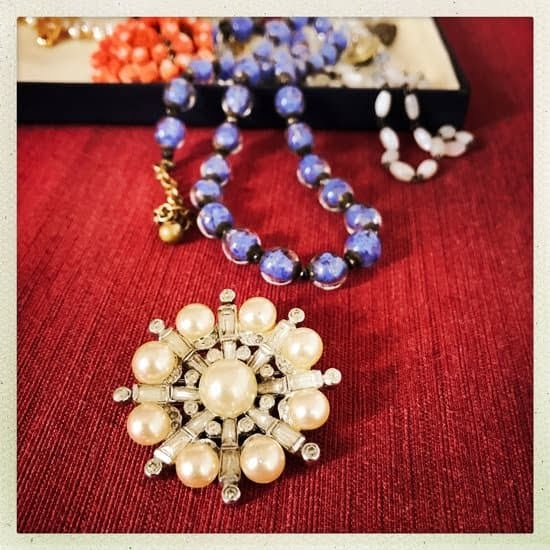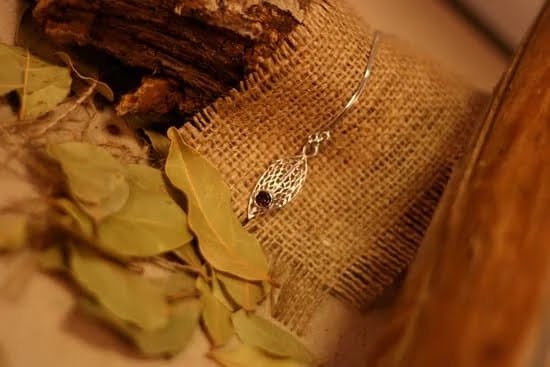Introduction
Creating beautiful jewelry tags for your handmade pieces can make them stand out in a crowd and set them apart from other creations. There are several ways to create professional-looking tags for your jewelry, from hand-stamped metal discs to laser printed card stock labels. This article will explain how to print jewelry tags that look impressive and do the job of advertising your product effectively.
1) Hand Stamping: Hand stamping is a great way to make simple metal discs that are suitable for labeling any type of jewelry. All you need is metal blanks, metal stamps, ink pads, and creativity! Choose the right fonts, size and shapes to create an eye-catching design on your disc before stamping it onto each individual piece of jewelry.
2) Label Printers: Professional-grade label printers such as Rollo are amazing tools to quickly churn out hundreds of high quality adhesive labels or plastic cards in one go. These machines can easily be integrated into any business process flow and will provide high quality results without much effort from the user. To print your own custom text or logo on the labels, simply feed the appropriate material into printer and press go!
3) Laser Printing: If you don’t have the budget for a professional label printer but still want impressive results, laser printing on card stock is an alternative option. Print full color images with ease while achieving crisp clean line by using specialty papers designed specifically for laser printing applications.
4) Engraving: For higher end pieces or metals that cannot be stamped, consider engraving as an alternative method of labelling jewellery items permanently. The engraver works by carving away material though friction heat so images in reverse appear as if they had been printed onto the object being engraved. Vital information including custom text or logos for branding can be engraved directly onto metals like gold or silver creating stunning long lasting effects with professional finishing touches.
Choosing the Best Printer for Your Jewelry Tag Projects
When looking for a printer to use for jewelry tag projects, it is important to find one that is compatible with your software and design types. Ideally, you should look for a high-quality inkjet or laser Printer that can handle the type of paper needed for your tags. For example, if you are printing onto card stock then it would be best to get an inkjet printer as its print heads have more accurate control over droplet size. It will also produce smoother edges than a laser printer.
Furthermore, make sure that the printer can handle the required resolution for your projects. For fine details and color accuracy you should consider models with higher resolutions such as 2400 x 600 dpi or greater. This will ensure crisp details when printing logos, intricate designs, small text and vibrant colors for your tags. Additionally, always check that the model has enough RAM (memory) so it won’t slow down during complex projects or when using multiple layers and effects. Lastly, it is a smart investment to purchase a duplex or two-sided Priinter that allows printing on both sides of pages at once – this will help to minimize waste while allowing multiple design options on each tag sheet. Shopping around to find the perfect printer setup for your jewelry tag projects is key to accomplishing great results!
Designing Jewelry Tags
Jewelry tags are an integral part of creating a unique and visually appealing product. The fonts and color palettes you choose will set the tone for your entire tag design. When selecting fonts and colors, there are a few things you should consider:
• What message are you trying to convey? Are you showcasing a sophisticated, elegant piece or something more playful? Choosing the right font can help communicate the desired message.
• Is there an existing brand identity or logo that should be incorporated into the design? This can determine which fonts might best match that identity, as well as what colors to use in order to reinforce brand recognition.
• Take into account how legible the font is at different sizes – if people can’t easily read it from a distance, then it may not work for a larger jewelry item.
• Consider complementing the font with a color palette that works well with the text type, shape and size of what’s being printed on. Consistent colors can establish a recognizable look for all your designs that customers will begin to associate with your business. For example, black text on ivory paper can give off an expensive yet timeless feel; while more vibrant colors against white would evoke cheerier aspects of jewelry wear-ability.
Finally, make sure you always proofread before printing out your tags! Keeping everything consistent in regards to text formatting and color accuracy will ensure maximum impact when customers receive their items. Also be mindful of any legal requirements when displaying certain information on tags such as care instructions or trademark/copyright notices which may vary by region; depending on the local laws in place your tags must adhere accordingly or risk hefty fines or even jail time!
Selecting Printer Settings
When printing jewelry tags, it is important to make sure that the settings are properly adjusted to produce the best results. Depending on the type of printer and materials being used, different settings may be needed to achieve optimal print quality. Consider the following tips to ensure your labels are printed correctly:
1. Select a Quality Printing Setting: When possible, always select a higher quality mode for any printing project. This will output better colors, clarity, and crispness of text elements on the tag.
2. Ensure Maximum DPI Output: The DPI (Dots Per Inch) setting should be set as high as possible for greater detail in photos and text elements within your label design. It is recommended to use at least 300 dpi for printing images or text with intricate details.
3. Utilize Print Previews: Before you begin full scale printing check with your printer’s software application to do a trial run with a print preview option when available; this helps avoid costly errors caused by incorrect settings until you’re completely happy with what will ultimately be printed out in mass quantities.
4. Test Materials Beforehand: Test different types of material before actual bulk production begins so that you know there won’t be any surprises in terms of how long it may take or how each individual piece prints out from disk to paper stock or other substrates that tags are typically printed on today (plastic films, cardstock etc). Additionally, make sure that no toners have rubbed off of one tag onto another due to more ink contact during certain types of processes like die cutting or lamination when appropriate
5. Double Check Settings: Always double check all print settings prior to initiating the printing process — brightness levels can affect detail (& color), fonts sizes scaled accordingly and other preferences like scaling wider size formats down depending on your desired cut size outcome should all be taken into consideration prior as well with particular attention paid before going ‘live’.
Materials and Finishes
Designing jewelry tags can involve a variety of materials and finishes. The goal when selecting materials and finishes is to find a combination that best suits your budget while still providing the desired look and feel in the finished product. It is important to consider the type of printing technique used, how frequently you may need to reprint the tags, and where they will be displayed or worn.
Different jewelry tag materials have different advantages. Cardstock paper provides an economical choice for large amounts of tags that don’t require frequent reprinting or rugged handling, while vinyl cards provide a more durable option than cardstock paper especially in extreme weather conditions. Metal tags are good for applications where strength and durability are needed and receive periodic polishing or protection from elements like rain and sun damage. Synthetic plastic cards are also ideal for using with harsh cleaning chemicals, standing up well to repeated contact with liquids without becoming warped, stained, or misshapen.Satin ribbon lanyards offer a unique and attractive presentation for displaying jewelry items such as necklaces or bracelets that hang around the neck or wrist area. For brands looking to make an impression on their customers, custom-designed jewelry tags with etched logos can be achieved by laser cutting techniques which results in sharp detail impacts on any metallic surface with various varieties such as stainless steel, brass, nickel silver, bronze or aluminum alloys available at varying price points depending on the specific application needs. For areas requiring additional security measures clear holograms can applied on top of special-pressure sensitive adhesive labels which not only provide an extra layer protection but also serve as a tamper evident security feature to prevent unauthorized access. Options abound when it comes to selecting materials and finishes for printing jewelry tags- be sure to consider sizes, thicknesses of material coating used (for printable surfaces), shapes (rectangles, squares circles), single/double sided printing requirements along with any other specialized features desired before making your final decision!
Quality Control
Before you print your jewelry tags, it is important to perform quality control checks. This will help to ensure that your tags come out correctly and look professional. Here are some tips to spot any errors before printing:
• Check the design – Make sure that the design of the tag meets your requirements in terms of font sizes, colors, pattern, and overall layout. This should be cross-checked with a physical mockup of what the finished product will look like.
• Check the data accuracy – Double check all data you have inserted into your tags, such as names and item numbers. A simple typo or incorrect information can create a very embarrassing situation if caught later on!
• Check for color accuracy – Use a proofing system to see how colors will look after printing; there may be slight discrepancies between your computer screen’s colors and those in actual production. Keep this in mind so that were characters are large enough to not have any smearing when printed.
• Proofread all text – Pass over the entire text one last time for spelling or grammar errors that may have been missed earlier. Spelling mistakes on a product label can give an unprofessional image
Post-Print Processes
Once your jewelry tags have been printed out, there are several post-print processes you can take advantage of to customize and elevate the look of these pieces. If you want a glossy finish, consider adding laminating your tags. This will give them a nice sheen and also protect them from wear and tear. You can also try using a large custom-shaped cutter to cut out the tag in any shape or design that you like – use different sizes, patterns, and colors to create a unique set of tags for each item. Finally, you might consider adding details such as sequins, crystals, or ribbons to enhance the look of the tag or even see if they offer pre-cut adhesive borders which can add an elegant touch to your final product. With some imagination and the right tools and materials, you can create vibrant, eye-catching jewelry tags that make each piece stand out from the rest.
Sustainable printing
Printing jewelry tags is a great way to market and advertise products. However, it’s important to consider the sustainability of printing materials. Finding the right printer with ethical sources can be difficult. Here are some best practices to ensuring sustainability when printing jewelry tags:
1) Use recycled paper or sustainable paper alternatives: Paper sourced from sustainably managed forests are ideal instead of papers made from bamboo or other non-sustainable resources. It also helps to use FSC (Forest Stewardship Council) certified paper or recycled paper as it supports sustainable forestry management.
2) Aim for local printers: Using local printers reduces the amount of transportation involved in delivering the product, limiting your impact on the environment. Additionally, being able to check in with your printer regarding source materials and dye processes is crucial for promoting sustainability initiatives.
3) Confirm that the printer only uses water-based dyes and vegetable-based oils for ink production: Water-based dyes allow for gentle removal of any residue from fibers, making them much more eco-friendly than alternative options such as petroleum-based formulas which take longer to break down in landfills once discarded. Similarly, vegetable-based oils reduce air pollution consumption during ink production and reduce toxicity levels that hazardous fumes cause within work environments.
4) Request low VOC (Volatile Organic Compound) /Low HAP (Hazardous Air Pollutants): Volatile organic compounds can be harmful to individuals exposed to them as well as slow reacting effects on our atmosphere over time leading towards even larger environmental problems if overused. Low VOC and Low HAP printing reduces pollutants in the air produced from most offsets like lithography styles used in commercial printing processes while still maintaining quality prints essential for retailers who require extensive stock inventory.
5) Ask what will happen after you discard the tags: Some printers are more transparent about their disposal process compared to others, so inquire if there is any recycling initiated by the company after you no longer need printed material like old tags and labels. Companies that practice recycling helps staying operations easily avoid wasted inputs like chemicals, electricity, solvents, etc ending up back into landfills while helping reduce expenses on gearing new materials essential throughout production lines later down its life cycle..
Outro
Printing jewelry tags is an easy and effective way to showcase the unique items in your store. It’s important that you print your tags on quality paper or cardstock to ensure they look great on display. You can create your own custom design or choose to use standard templates available online. For the best results, you should use a professional printer with quality ink cartridges that won’t fade in time. Once printed, you can attach the tags to each piece of jewelry with a string, ribbon, or jump ring. Make sure to sign or stamp your tags to establish authenticity and make them recognizable at a glance. With beautiful tags right at hand, it’s always time to get ready to showcase your elegant jewelry!

Welcome to my jewelry blog! My name is Sarah and I am the owner of this blog.
I love making jewelry and sharing my creations with others.
So whether you’re someone who loves wearing jewelry yourself or simply enjoys learning about it, be sure to check out my blog for insightful posts on everything related to this exciting topic!





